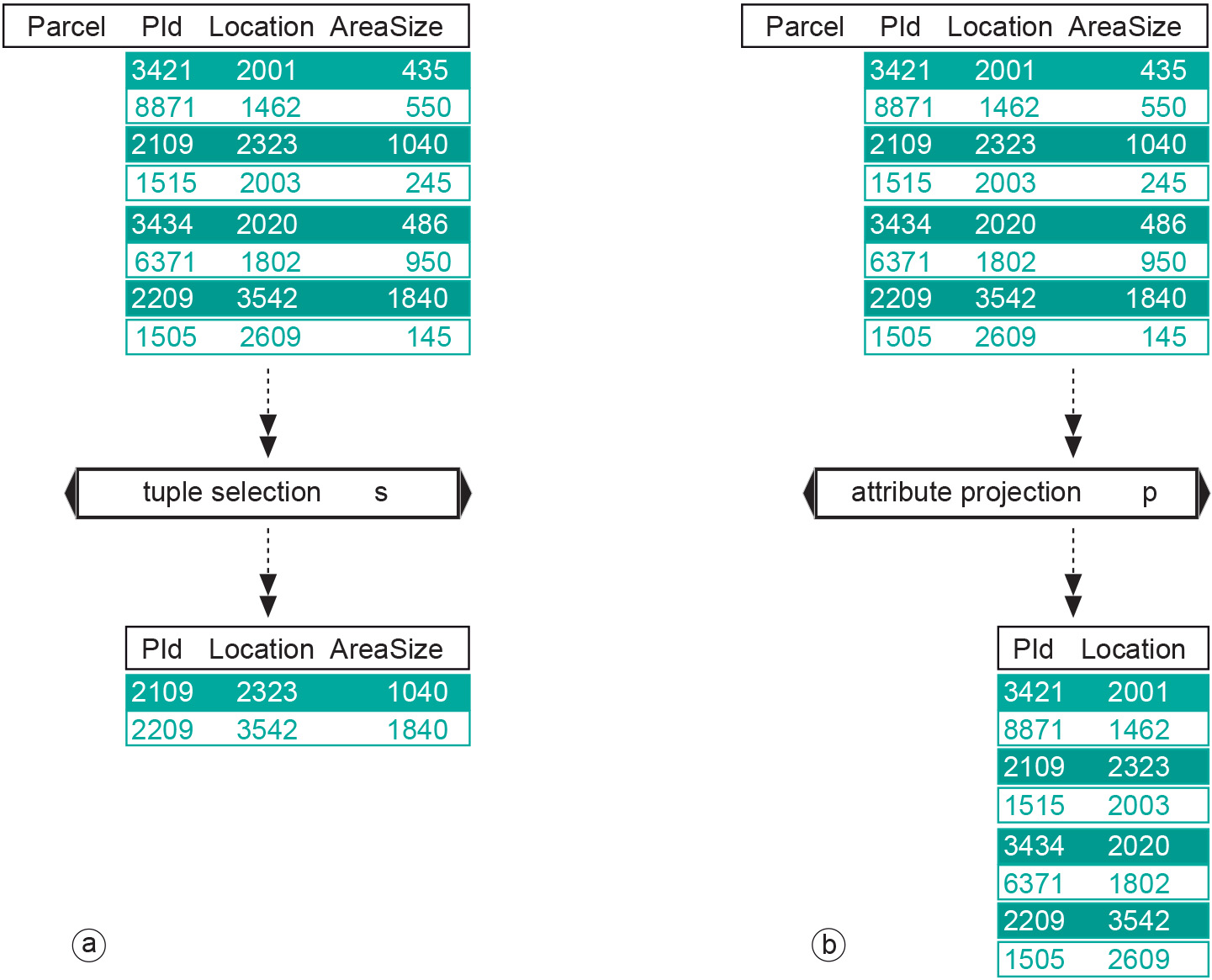Attribute projection
Introduction
A second operator, called attribute projection, requires a list of attributes, all of which should be attributes of the schema of the input relation. The output relation of this operator has as its schema only the list of attributes given, so we say that the operator projects onto these attributes. Contrary to the first operator, which produces fewer tuples, this operator produces fewer attributes compared to the input relation.
Attribute projection works like a tuple formatter: it passes through all tuples of the input, and reshapes each of them in the same way.
Queries like the tuple selection and attribute projection do not create stored tables in the database. This is why the result tables have no name: they are virtual tables. The result of a query is a table that is shown to the user who executed the query. Whenever the user closes her/his view on the query result, that result is lost. The SQL code for the query is, however, stored for future use. The user can re-execute the query again to obtain a view on the result once more.

Learning outcomes
-
5 - Data management: relational database and DBMS
Describe and explain the structure and components of a relational data model and a relational database (level 1 and 2). Describe and explain what a Database Management System (DBMS) is and how it links to a GIS.
Prior knowledge
Outgoing relations
- Attribute projection is a kind of Query